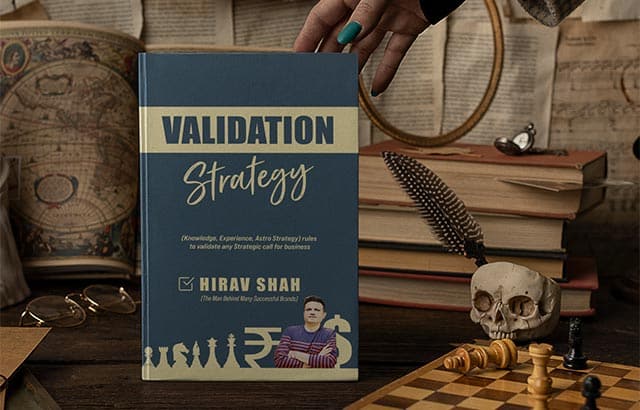Building a brand goes beyond just a logo or a product. At its core, brand value is all about forging a deep emotional connection with your audience. This emotional resonance influences consumer decisions, shapes brand loyalty, and ultimately drives growth. Whether you’re just starting or scaling a business, understanding the power of brand value creation is key to staying relevant and thriving.
Table of Contents
Brand Building: More Than Just Your Product
Your brand isn’t just your product or service, nor is it limited to your logo or name. Building a brand is about creating value for your company—it’s about forging relationships that resonate on a deeper emotional level. This type of brand building requires time, patience, and resources. However, the payoff is a long-term, loyal customer base that truly connects with your brand.
In this blog, we’ll explore how to leverage emotional connections to grow your brand, with actionable strategies provided by business strategist Hirav Shah.
Key Strategies to Enhance Your Brand Value
1. Influencer Marketing: Building Trust Through Partnership
In an age where social media rules, influencer marketing has emerged as one of the most powerful tools in the brand-building arsenal. By partnering with influencers who have a strong, loyal following, brands can quickly get in front of their target audience and build trust. Influencers act as trusted intermediaries, endorsing your brand in a way that feels authentic and relatable to their followers.
Example:
KFC India launched a campaign called The Secret Burger by collaborating with top food bloggers. The influencers created content around the unique flavors of KFC’s new burger, increasing awareness and driving consumer engagement. The influencers’ audiences trusted their opinion, which led to a substantial increase in KFC’s brand visibility.
2. SEO Research: The Foundation of Visibility
Search Engine Optimization (SEO) is critical for businesses to ensure they appear on the radar of potential customers. Proper keyword research and analysis are essential before using SEO tools. By optimizing your content with relevant, high-impact keywords, you can improve your brand’s discoverability on search engines.
Additionally, keeping an eye on the keywords your competitors are targeting is equally important. If your competitors are ranking high for certain terms, you might want to incorporate similar keywords in your strategy, but ensure you’re offering unique value to stand out.
Example:
A brand that sells organic skincare might use keywords like “best natural face cream” or “chemical-free skincare routine.” Doing so helps them rank higher on search engine results and connect with customers who prioritize natural ingredients.
3. Social Media Strategy: Building Relationships with Your Audience
Social media isn’t just a platform for posting updates. It’s a powerful tool for creating real-time connections with your audience. By building a robust social media presence, you can directly engage with customers, create community, and humanize your brand.
Brands that engage with their followers—whether it’s responding to comments, sharing user-generated content, or jumping on trending topics—show that they care. This fosters trust and loyalty.
Example:
Nike has done a stellar job with its social media marketing. The brand consistently engages its followers with inspirational posts, user-generated content, and fitness challenges. By showcasing athletes’ stories and supporting social causes, Nike has turned its social media platforms into a hub for engagement and brand loyalty.
4. Stop & Stare: Make Them Think
Now its a noisy media landscape, it’s easy for messages to get lost in the shuffle. To truly stand out, you need to create content that makes people stop in their tracks. Think beyond traditional ads and create something so compelling, so captivating, that it resonates on an emotional level.
Your content should make your audience feel something—whether it’s excitement, nostalgia, or even curiosity. The goal is to create something that is memorable and sparks a conversation.
Example:
Apple’s iconic “Think Different” campaign wasn’t just about selling products; it was about aligning the brand with a certain lifestyle and attitude. The campaign celebrated innovation and creativity, leaving an indelible mark on consumers’ minds.
5. Be Human: Personify Your Brand
In an age where automation and AI dominate, brands that can humanize themselves have a distinct advantage. Consumers are more likely to engage with brands that feel relatable and authentic. It’s important to personify your brand—give it a voice, a personality, and a sense of character.
Whether it’s through humor, storytelling, or even sharing your company’s values, make your brand feel like a real person. Be a friend, a mentor, or even a challenger to your audience.
Example:
The brand Dove has done an excellent job of portraying authenticity through its “Real Beauty” campaign. By showcasing real women of different shapes, sizes, and backgrounds, Dove has created a brand image that feels welcoming, empowering, and human.
FAQs on Brand Building and Growth Hacking
1. How long does it take to build brand value?
Building brand value takes time—it’s a gradual process that involves consistent effort. Depending on the industry, it could take anywhere from a few months to several years to establish a solid brand foundation.
2. Is influencer marketing really worth the investment?
Yes, influencer marketing can provide excellent ROI if done correctly. The key is to find influencers whose audience aligns with your target market and to create authentic collaborations that don’t feel like hard selling.
3. What are the common mistakes to avoid in SEO for brand growth?
Some common SEO mistakes include keyword stuffing, neglecting on-page SEO (like meta descriptions and header tags), and not tracking SEO performance. Make sure to optimize your content for both search engines and the user experience.
4. How can social media engagement impact brand loyalty?
When brands engage with their followers, they foster a sense of community and trust. Responding to comments, sharing customer stories, and participating in conversations make your audience feel valued, which builds long-term loyalty.
Final Thoughts on Building Your Brand Value
Building a strong brand isn’t just about attracting customers; it’s about cultivating a loyal community that feels connected to your mission, products, and values. The strategies outlined here—Influencer Marketing, SEO, Social Media Engagement, Creative Content, and Brand Humanization—are all critical components in achieving this.
Remember, implementing these strategies requires consistency and authenticity. By integrating these practices into your marketing strategy, you can position your brand as a leader in your industry.
Hirav Shah, a seasoned business strategist and game changer in the branding space, emphasizes the importance of action. No amount of knowledge or mentorship can help if you’re not willing to take the leap. So, take the first step toward enhancing your brand’s value and watch it soar!
So, what are you waiting for? It’s time to go for it and make your brand unforgettable!
To make your entrepreneurial journey even more impactful, check out “Validation Strategy” and “Startup Readiness Kit” by Hirav Shah. In “Validation Strategy,” Hirav Shah offers a powerful blueprint to help you make informed business decisions, ensuring that every move you make is backed by solid validation. And for those launching a startup, “Startup Readiness Kit” provides the ultimate guide to aligning clarity, strategy, and execution—using the proven 6+3+2 success model. Both books are invaluable resources for entrepreneurs looking to avoid costly mistakes and maximize their chances of success.




















